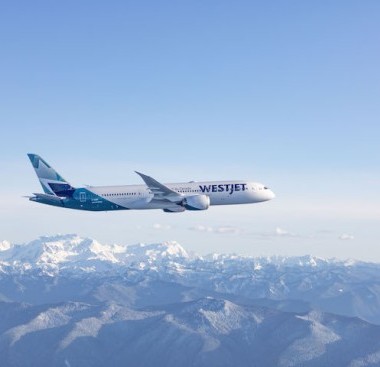What’s the future for ocean carrier alliances?
In 2025 Maersk and Hapag will begin their Gemini Cooperation alliance while MSC will go it alone. So with all these domino changes, what’s the future of ocean carrier alliances?
What’s the future of ocean carrier alliances? At this writing the 2M alliance consisting of the mega-carriers, Mediterranean Shipping Company (MSC), the world’s largest containership operator and Maersk, the second largest containership operator is set to dissolve in January of 2025.
Hapag Lloyd, the 5th largest containership operator and a current member of THE Alliance, is set to leave the group in 2025 and join Maersk in the “Gemini Cooperation” alliance in February of 2025.
Considering that the three major alliances, the 2M, THE Alliance, and Ocean Alliance, include nine out of the top ten containership operators, the reshuffling of the alliances is analogous to a major remodeling of the container shipping industry itself. So, what’s next: a big change or more of the same?

The Power of the Alliances
The power of the top three containership operators’ alliances is immense.
Although government agencies around the globe forbid ocean carriers from collaborating on freight rates, cooperation with scheduling and other backroom operations is permitted. And the scheduling of vessel rotations is a powerful tool, even without the freight collaboration. It is a power that lies in numbers. According to Alphaliner, probably the most respected chronicler of containership statistics, there are some 6,880 containerships active with a capacity of 29,245,085 TEUs. The combined fleets of the existing alliances total 3,504 ships or just about 51% of the active fleet (see Alliance Charts). But the real power is the TEU capacity. The combined alliances have 23,727,046 TEUs in capacity or just over 81% of the total world fleet. This overwhelming TEU capacity translates into an unmatched ability to globally move containers and thus move goods. This is at the core of the alliance system and the containership industry.
And if things were to continue unchanged, the power would increase as the TEU capacity on order — the containership orderbook — is concentrated among the current big three alliance members. MSC, has 1.3 million TEUs worth of capacity on order while number 3 ranked CMA CGM has 1.1 million TEUs of capacity.
Of the ocean container carriers outside the big three alliances, Zim the 10th ranked carrier, has just over 144,000 TEU on order, while PIL (Pacific International Line) has just 104,000 TEUs on order and no other container ship operator has close to 100,000 TEUs on order.
Of course, with the 2M split and Hapag Lloyd’s defection from THE Alliance to joining Maersk in the Gemini Cooperation, there is a shift in alliance operations — if not power — coming soon.
Current Ocean Carrier Alliance Structure
| Total | Owned | Chartered | Orderbook | |||||||
|---|---|---|---|---|---|---|---|---|---|---|
| Alliance | Rank | Ocean Carrier | Ships | TEU | Ships | TEU | Ships | TEU | Ships | TEU |
| 2M Alliance | 2 | Maersk | 686 | 4,204,390 | 337 | 2,507,517 | 349 | 1,696,873 | 34 | 424,110 |
| 1 | Mediterranean Shipping Co | 807 | 5,762,357 | 512 | 2,818,066 | 295 | 2,944,291 | 111 | 1,330,976 | |
| Total | 1,493 | 9,966,747 | 849 | 5,325,583 | 644 | 4,641,164 | 145 | 1,755,086 | ||
| THE Alliance | 5 | Hapag-Lloyd | 278 | 2,049,077 | 125 | 1,234,161 | 153 | 814,916 | 12 | 211,110 |
| 6 | ONE (Ocean Network Express) | 232 | 1,818,720 | 92 | 783,644 | 140 | 1,035,076 | 42 | 527,798 | |
| 8 | Hyundai Merchant Marine Co Ltd | 71 | 786,131 | 38 | 565,044 | 33 | 221,087 | 25 | 252,367 | |
| 9 | Yang Ming Marine Transport Corp | 94 | 707,018 | 56 | 288,640 | 38 | 418,378 | 5 | 77,500 | |
| Total | 675 | 5,360,946 | 311 | 2,871,489 | 364 | 2,489,457 | 84 | 1,068,775 | ||
| Ocean Alliance | 3 | CMA CGM Group | 632 | 3,638,028 | 254 | 1,810,418 | 378 | 1,827,610 | 97 | 1,119,019 |
| 4 | COSCO Group | 491 | 3,097,252 | 186 | 1,769,338 | 305 | 1,327,914 | 46 | 793,502 | |
| 7 | Evergreen Line | 213 | 1,664,073 | 128 | 980,839 | 85 | 683,234 | 69 | 807,070 | |
| Total | 1336 | 8,399,353 | 568 | 4,560,595 | 768 | 3,838,758 | 212 | 2,719,591 | ||
| Alliances Total 2024 | 3,504 | 23,727,046 | 1,728 | 12,757,667 | 1,776 | 10,969,379 | 441 | 5,543,452 | ||
Divergent Liner Strategies
Since the 2023 announcement of the 2M split by Maersk and MSC alliance, the two carriers have proceeded with their mutually agreed disentanglement.
In the case of the two giants MSC and Maersk, it is easy to see that their approach to containership business is different.
Maersk has embraced the role of building a logistics vertical, not too different conceptually from the mega-integrators like UPS or FedEx. The difference with the former is that their cores are different — UPS with its trucking core and FedEx with its airfreight. Maersk’s core is clearly its containership operations, but the company is building out a logistics business around this central activity. And there are some noticeable shifts that have come with the implementation of the new business philosophy.
For many years, it was important to Maersk to be the number one containership operator. Just as economy of scale has been the primary motivation behind building ever larger containerships — having more (and larger) containerships enables an ocean carrier to efficiently manage an extensive interconnected network of vessel rotations. But the top spot on the container ship operator list now belongs to MSC, with number two Maersk over a million TEU behind. And Maersk could slip further down the list of top containership operators over the next decade…or even sooner.
MSC, which as the world’s largest containership operator already deploys over 5.7 million TEU, has over another 1.3 million TEU on the orderbook — so it is highly unlikely to relinquish the top spot anytime soon. And number three CMA CGM has 1.1 million TEU of ships on order while the number four carrier COSCO has nearly 800,000 TEU on order. Both of these carriers are nipping at the heels of Maersk and conceivably both could overtake Maersk in the next few years.
But for Maersk their TEU ranking isn’t as important a goal as building a comprehensive logistics structure that can produce returns to flatten the income troughs the ocean shipping industry so often slips into.
This isn’t to say that other carriers aren’t looking to add more logistics services to their toolbox. Many are doing just that for much the same reason. For example, the CMA CGM Group includes CEVA Logistics and CMA CGM Air Cargo, while MSC, the most carrier centric operator, also has its own MSC Air Cargo service. (see Stuart Todd, Do ocean carriers have a future in airfreight? page 32) The difference is Maersk isn’t simply adding another tool to the toolbox but rather building a brand new toolbox. The question is in a copycat business like ocean shipping, will others follow Maersk’s lead?
Gemini: Two Peas in a Pond?
Back in January of this year, Maersk and Hapag Lloyd announced they had signed for a “long-term operational collaboration,” the “Gemini Cooperation” agreement with the goal of delivering “a flexible and interconnected ocean network.” For the announcement a new logo of a figure eight knot consisting of blue and orange intertwined rope was unveiled.
But unlike the knot, the agreement isn’t a union of equals as Maersk is significantly larger than Hapag Lloyd and this reflected in the operational structure as the “new cooperation between Hapag-Lloyd and Maersk will comprise a fleet pool of around 290 vessels with a combined capacity of 3.4 million containers (TEU); Maersk will deploy 60% and Hapag-Lloyd 40%.” Collectively, the two carriers control 964 vessels of around 6.5 million TEU, so the Gemini arrangement accounts for around 30% of the combined fleet but 54% of the TEU — this translates into larger line haul vessels for the Gemini pact.
As the percentage implies Maersk’s share of the deployment amounts to 174 ships or around 25% of their fleet while Hapag Lloyd’s contribution is estimated at 116 vessels or 42% of their total fleet. For Maersk, this means they will have 512 vessels available outside the Gemini agreement while Hapag Lloyd will have 162 vessels operating separately from the agreement. Clearly Hapag Lloyd has a lot at stake with the new agreement.
One thing both carriers are looking to do is deliver “schedule reliability.”
As the announcement laid out, “As a part of the agreement, the two companies have set the ambitious target of delivering schedule reliability of above 90% once the network is fully phased in. As well as improved service quality, customers will also benefit from improved transit times in many major port-to-port corridors and access to some of the world’s best connected ocean hubs.”
Pedro Silva, Hapag Lloyd’s Senior VP Sales for the US, said at the Coalition of New England Companies for Trade & Transportation Conference (CONECT) on April 10th, and explained the logic behind the Gemini Cooperation alliance, “Our vision is with the Gemini Cooperation, we’re going to have on the main liners reduced number of port calls, usually two or three, no more than three on origin and destination. And then we are going to cover the additional ports with the shuttle services, with one small note there that of course in US we cannot use the hub-and-spoke concept.”
The US services are the exception because the Jones Act forbids foreign flag carriers from cargo carriage between US ports — a foreign flag carrier can load and discharge but not load and discharge US freight between US ports.
While shippers may have doubt that the Hub and Spoke concept will work as planned Silva says, “But if you look at Asia, Europe, Middle East, all the trades that are involved in the Gemini Cooperation, the main lines will reduce the number of the main liner port calls to reduce risk and prioritize on-time delivery. From a coverage standpoint, we’re actually going to offer more connections than we have today.”
On the subject of blank sailings [when a scheduled ship doesn’t call a port] Silva says that they will try to avoid them by reducing the calls to once a week, rather than twice and thus the calls will have the necessary “critical mass” to avoid blank sailings.
The key aspect of the Hub and Spoke system for Gemini is as Silva points out, “We’re going to have about 12 main hubs globally… Out of those 12 main hubs, we actually … control the 10 of them.”
As in any marriage of convenience, the question of whether the interest of both parties will remain the same over the “long-term” is an open question. But given the number of vessels available — especially to Maersk — leaves considerable room to operate outside the parameters of the alliance. Flexibility that may benefit both Maersk and Hapag Lloyd in the future.
Future Ocean Carrier "Alliance" Alignment 2025
| Total | Owned | Chartered | Orderbook | |||||||
|---|---|---|---|---|---|---|---|---|---|---|
| Alliance | Rank | Ocean Carrier | Ships | TEU | Ships | TEU | Ships | TEU | Ships | TEU |
| Gemini | 2 | Maersk | 686 | 4,204,390 | 337 | 2,507,517 | 349 | 1,696,873 | 34 | 424,110 |
| 5 | Hapag-Lloyd | 278 | 2,049,077 | 125 | 1,234,161 | 153 | 814,916 | 12 | 211,110 | |
| Total | 964 | 6,253,467 | 462 | 3,741,678 | 502 | 2,511,789 | 46 | 635,220 | ||
| THE Alliance | 6 | ONE (Ocean Network Express) | 232 | 1,818,720 | 92 | 783,644 | 140 | 1,035,076 | 42 | 527,798 |
| 8 | Hyundai Merchant Marine Co Ltd | 71 | 786,131 | 38 | 565,044 | 33 | 221,087 | 25 | 252,367 | |
| 9 | Yang Ming Marine Transport Corp | 94 | 707,018 | 56 | 288,640 | 38 | 418,378 | 5 | 77,500 | |
| Total | 397 | 3,311,869 | 186 | 1,637,328 | 211 | 1,674,541 | 72 | 857,665 | ||
| Ocean Alliance | 3 | CMA CGM Group | 632 | 3,638,028 | 254 | 1,810,418 | 378 | 1,827,610 | 97 | 1,119,019 |
| 4 | COSCO Group | 491 | 3,097,252 | 186 | 1,769,338 | 305 | 1,327,914 | 46 | 793,502 | |
| 7 | Evergreen Line | 213 | 1,664,073 | 128 | 980,839 | 85 | 683,234 | 69 | 807,070 | |
| Total | 1336 | 8,399,353 | 568 | 4,560,595 | 768 | 3,838,758 | 212 | 2,719,591 | ||
| Hypothetical Alliances Total 2025 | 3,504 | 23,727,046 | 1,728 | 12,757,667 | 1,776 | 10,969,379 | 441 | 5,543,452 | ||
| Independent | 1 | Mediterranean Shipping Co | 807 | 5,762,357 | 512 | 2,818,066 | 295 | 2,944,291 | 111 | 1,330,976 |
1M — An Alliance of One?
So where does this Maersk-Hapag Lloyd union leave the number one containership operator MSC? In the driver’s seat.
MSC currently has 807 ships in operation (512 owned) and another 111 vessels on order, amounting to over 1.3 million TEU.
Given the orderbook, MSC should soon be operating a fleet of around 900 vessels and with close to 7 million TEU in capacity. With that much tonnage MSC can be an alliance of one with a plethora of other opportunities.
Like any ocean carrier MSC’s revenue goal is to take some of the valleys out of the roller coaster ride that is inherent to the ocean carrier industry. Freight rates rise and fall with alarming regularity to the dismay of shipowners. One hedge is chartering in tonnage. For instance, MSC has chartered 295 vessels of 2.9 million TEU, the largest amount an ocean carrier like CMA CGM at number two has 378 ships of 1.8 million TEU and Maersk 349 at nearly 1.7 million TEU with COSCO at 305 containerships at 1.3 million TEU. The advantage of charters is it is a way to control costs and affords flexibility in trimming sails when business runs afoul.
But there is another tool that containership carriers like to use and that is Vessel Sharing Agreements or VSAs. VSAs are agreements between carriers that are narrow in scope and typically are easier to create or dissolve than an ocean carrier alliance. Since they usually are narrow in their scope, VSA’s also attract less regulatory attention than an outright alliance. So, if MSC is inclined to target a specific route but wants to spread the trade lane risk, a VSA is an attractive option. And if you are as big as MSC, there will be no shortage of partners that would be interested.
So, while the restructuring of the alliances in 2025 will create new competition with the independence of MSC, ultimately it is much the same gameplan. For the moment, the future of ocean carrier alliances in 2025 looks much like it did in the past.
Still, the ocean carrier industry is facing many challenges with evolving environmental demands and shippers unhappy with the top heavy structure, perceived lack of competition and underperformance.
Similar Stories
President Biden nominates Matt Kaplan to lead new Great Lakes Authority
Yesterday, the White House nominated Matt Kaplan to serve as the first federal co-chair of the Great Lakes Authority. The GLA was authorized by Congress in 2022 and will be…
View Article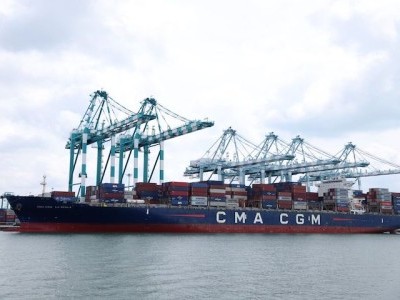
CMA CGM Announncement: PSS02 - From Asia to West Africa
View Article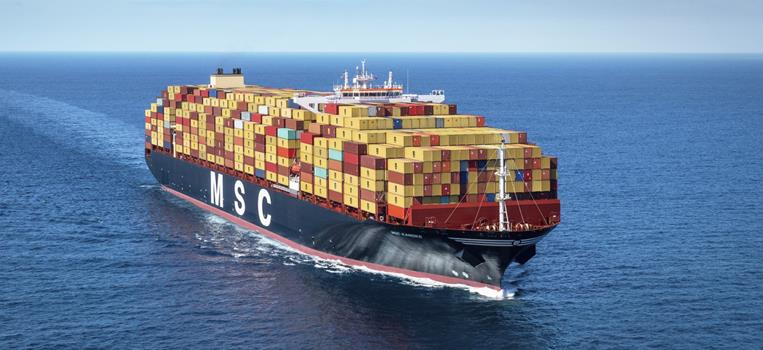
MSC Annoucement: GRI - General rate increase - CANCELLED
View Article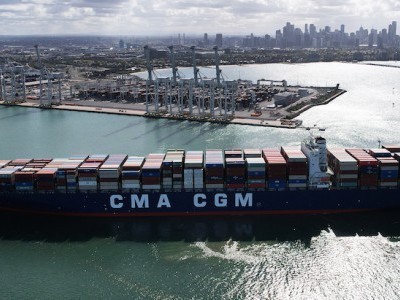
CMA CGM Expiration: Empty equipment imbalance surcharge - from Spain to East Mediterranean & Black Sea
View Article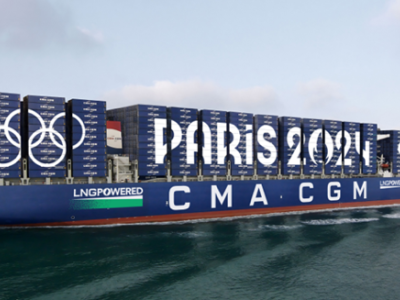
CMA CGM GREENLAND: Arrival of the Olympic Flame in Marseille
View Article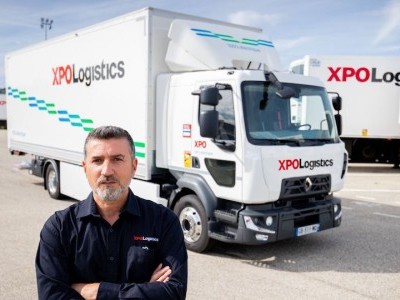
XPO Reports First Quarter 2024 Results
View ArticleGet the most up-to-date trending news!
SubscribeIndustry updates and weekly newsletter direct to your inbox!





